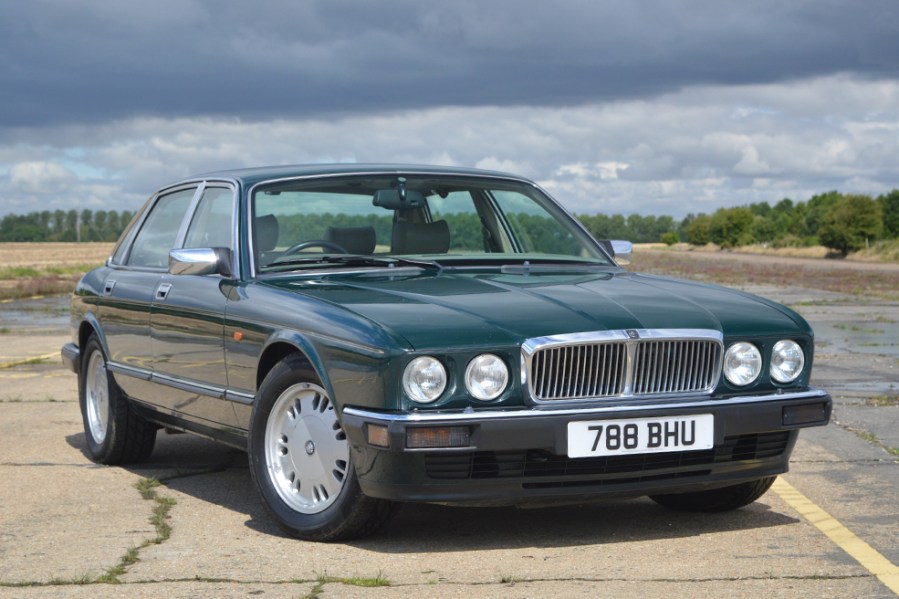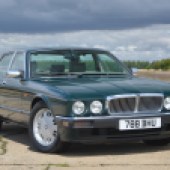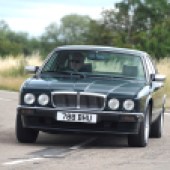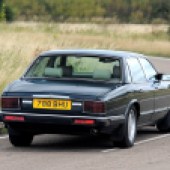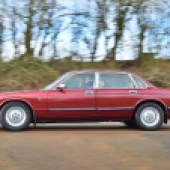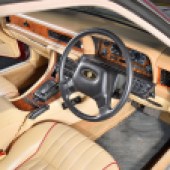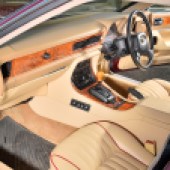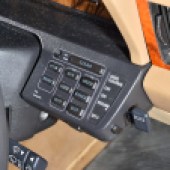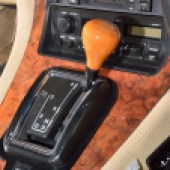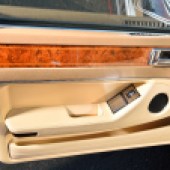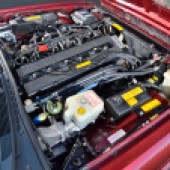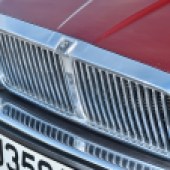Tasked with replacing the long-running ‘Series’ XJ in 1986 was the model codenamed XJ40, a luxury saloon that now’s a tempting classic choice
Sponsored editorial in association with Lancaster Insurance
Few Jaguar models have been so thoroughly overlooked as the XJ40. Only recently emerging from its long stint in that uncertain space between a cheap, ageing prestige car and a modern classic, the XJ40 offers more Jaguar for your money than ever before. Yet, it may also bring more headaches per pound than you might wish for.
The main challenge for the XJ40 was that its predecessor, the Series 3, was such an exceptional and well-loved car that it continued in V12 form as a special order until 1992. At the other end of its life, the XJ40’s successor, the X300, was so capable that many remain in regular use today. Early quality issues damaged the XJ40’s reputation, although these were quickly addressed, and by the middle of its production run the car had largely improved. In fact, the X300 was essentially a heavily facelifted XJ40, confirming the strength of its underlying design.
Almost unbelievably, work on the car to replace the original XJ began just a few years after its launch. However, despite plans laid down in the early 1970s, the new model was not to appear until 1986. Partly this delay was due to the complicated finances of British Leyland at the time, with development effectively put on hold until the late 1970s. The work of Pininfarina in updating the Series 2 into the elegant Series 3 also reduced the urgency to create a replacement.
Having evolved from a rather stark, angular concept into a design more in line with Jaguar’s style, the XJ40 was given the green light for production in 1980, with the BL board approving an expenditure of £77 million, apparently in the hope it would secure a return to the US market.
The launch was originally scheduled for 1984 and would bring new styling alongside chassis and engine upgrades. The Series 3 still relied on the XK engine, originally developed in the 1940s, so the new AJ6 was only the third new engine in Jaguar’s history. The ‘chassis’ took everything good about previous XJs and refined it, notably replacing the tricky inboard rear brakes with a more conventional outboard setup. The rear suspension was also revised to allow the rear wheels to move slightly backwards under compression, improving ride comfort.
The 1984 launch date proved optimistic, and the XJ40 was finally revealed in 1986. At launch, the car was offered with a 2.9-litre single-cam 12-valve AJ6 engine, which shared a cylinder head design with the V12, and a twin-cam 24-valve 3.6-litre unit. The newer engines were more efficient, allowing a reduction in capacity and enabling Jaguar to offer a model under three litres, which was growing in popularity due to tax and fuel considerations.
The 2.9 was no powerhouse, especially in automatic form, but priced at £17,200 with cloth seats and a manual gearbox, it neatly undercut top-spec Rover 800s. By this time, Jaguar and Rover were no longer rivals under the same roof, with Jaguar having become independent from British Leyland in 1984.
The new car was well received by the press and was technically superior to its predecessor in almost every respect, with particular praise for its ride and handling. The honeymoon was brief, however, as early quality problems soon surfaced. This was a blow for Jaguar, but fortunately, its acquisition by Ford in November 1989 brought the funds needed to update production and improve quality. Meanwhile, the AJ6 engines were upgraded, with a 4.0-litre version replacing the 3.6 in 1989.
In 1993, the long-awaited 6.0-litre V12 version of the XJ40 was announced, following a bodyshell revision the year before to accommodate the larger engine. The £35 million programme, which introduced 140 new panels, was not just for the limited number of V12 cars expected to be sold; it also aimed to reduce component variety to enhance refinement, rigidity and production efficiency. Other improvements included updated door trims and the launch of two new models, the 3.2 S and 4.0 S, featuring five-spoke alloys and lowered suspension.
All of this paved the way for the XJ40’s successor, with the last example rolling off the production line in 1994.

Jaguar XJ40 values
Values of the XJ40 vary widely, with a significant gap between the cheapest and the finest examples. You could pick up a car for around £2000 to £2500, but at that price it’s likely to be a rolling project, affected by common XJ40 faults, best suited to someone with the time and dedication to restore it. If you move up to around £5000, you’ll find well-maintained cars owned by enthusiasts, many of which are surprisingly tidy.
The very best models tend to be from 1993 to 1994; even then, expect to pay about £10,000 for the top V12 versions. Although values have increased in recent years, there is still plenty of car for the money here.
Insurance Costs
1988 Jaguar XJ 4.0, £6000 value.
Example quote: £132.82 or £150.82 with Agreed Value.Quotation supplied by Lancaster Insurance. Tel: 01480 400761
Quote based on a 45-year-old marketing manager, access to another car, no claims or convictions, club member, 3000 miles per year, no modifications, living in SP2 0HL. Disclaimer: Subject to underwriting criteria. An additional charge may be payable. Authorised and regulated by the Financial Conduct Authority.
Bodywork
Here, the rule is simple: the newer the car, the better. While the XJ40 is much sturdier than the Series 1 to 3 models, rust can still be its downfall and has caused the loss of many examples.
Key structural trouble spots include the front subframe, where the upper wishbones attach, the front bulkhead, and the areas around the suspension turrets. We’ve seen poorly looked-after cars suffer severe rot in these parts, which usually means any typical example will only be suitable for spares or major repair. The outer sills also require close inspection – even if you only notice bubbling paint, it’s almost certainly rust working its way through from inside, with the damage hidden beneath being far worse than it appears. Inner sills are just as prone to corrosion but harder to check properly, although shining a torch underneath should give you a reasonable idea of their condition.
Cosmetic rust is less likely to cause an MoT failure but will spoil the car’s appearance and reduce its value. You should carefully inspect all four doors, especially along their lower edges, for rust and bubbling paint. Also check the rear wheelarches and front wings. In severe cases, the rear quarter panel above the wrap-around bumper can rot through, as can the front screen surround, particularly the lower corners. Don’t forget to examine the radiator support too, though this is a bolt-on part and relatively straightforward to replace, setting you back about £180.

Engine and transmission
The AJ6 engines are well regarded and have shown themselves to be durable and dependable, provided they’re properly maintained. A growling rattle from the front of the engine at start-up could point to the timing chain tensioner, which can be addressed by fitting the later X300 version, priced around £85. Open the bonnet and listen carefully for any unusual noises, as there’s a substantial amount of soundproofing underneath it.
While head gasket failure isn’t common, it has been known to happen, so it’s worth checking for signs such as oil in the coolant or sludge under the oil filler cap. The 3.6-litre engine often seeps oil from the front corner of the cylinder head near the distributor, but this is fairly typical and nothing to worry about.
If the air conditioning isn’t functioning, be wary of any seller claiming it simply needs a “re-gas”. The refrigerant must have escaped for a reason, which will need to be identified and resolved.
Most XJ40s were fitted with the ZF four-speed automatic gearbox, which was offered as a no-cost upgrade from the standard five-speed manual. As always, inspect the condition of the transmission fluid – if it’s black and smells burnt, that’s a bad sign – and make sure the car engages Drive promptly and shifts smoothly. If the gear lever won’t move out of Park, the fault is usually with the safety interlock or potentially just the brake light switch at the pedal, the latter being an (albeit rare) sub-£20 part.
The rear differential can become noisy after around 100,000 miles, but in most cases it doesn’t worsen and will continue to operate without trouble. A more notable concern is the output oil seal at the propshaft. The Getrag manual gearbox is rarely seen, but a manual 4.0-litre example is quite an appealing find if you happen to come across one.
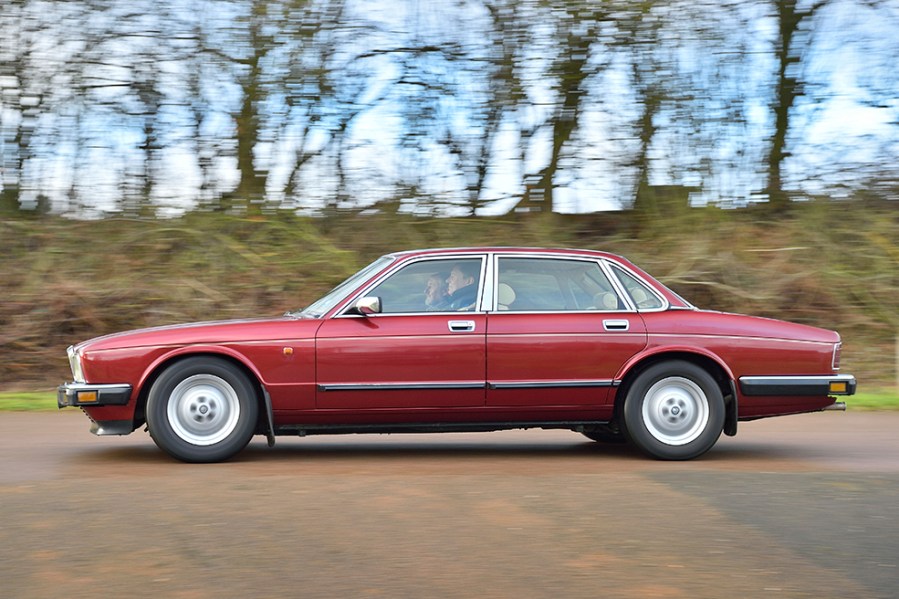
Suspension, steering and brakes
Early examples were offered with an optional hydraulic self-levelling system on the rear, but this can fail and cause the back of the car to bounce in an unsettling way. It’s costly to repair, so many will have been converted to standard springs and dampers. Jaguar themselves even recommended this change, supplying a retro-fit kit to disable the hydraulic system and fit conventional suspension; boasting premium Bilstein dampers, the kit will set you back around £570 online.
The XJ40’s chassis is surprisingly capable, which often encourages enthusiastic driving. This tends to wear out the suspension bushes over time. Worn front wishbone bushes and rear A-frame bushes can result in vague handling, but replacing them is a relatively simple job for a competent DIYer.
These are large, heavy cars and will get through discs and pads fairly quickly when driven hard. Expect to pay around £100-£120 for a full axle set of discs and pads. On the plus side, Jaguar moved the previously troublesome inboard rear brakes to a conventional outboard position on the XJ40, making maintenance much more straightforward.
If the ABS or brake warning light stays on longer than usual, the Citroën-style pressure accumulator could be the culprit. This unit supplies power assistance for the brakes in place of a conventional vacuum servo. A leaking system can trigger a low-pressure warning on the dashboard. It’s fairly common to convert the setup to a more traditional vacuum servo arrangement.
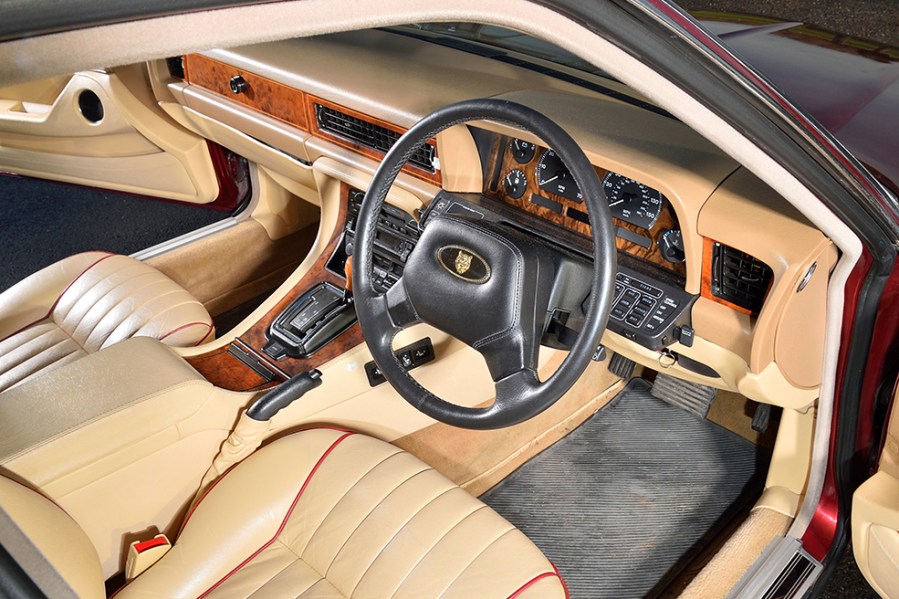
Interior, trim and electrics
Once again, later models are preferable, as the electrics on early cars were known to be problematic and were improved a few years into production. Notably, the semi-digital dashboard with bar graph displays for the minor instruments was replaced by traditional dials for the 1990 model year. The XJ40 introduced a new level of electrical complexity for Jaguar, with separate control modules located throughout the car, but these days it is often straightforward to diagnose faults by swapping in used modules. In essence, test all switches and control panels to identify what is and is not working.
Door lock solenoids are also prone to failure, often leaving the car unable to be locked, but replacements are simple enough for the competent DIY owner and generally cost around £30. On cars built before 1990, the design of the exterior door handles means they are easily broken by rough use.
Interior trim is generally durable, though the leather upholstery may crack or split with age. Unless the damage is severe, the finish can usually be improved with a leather restoration or recolouring kit. Sagging headlining is another common issue, but various independent Jaguar specialists offer a supply-and-fit replacement service.
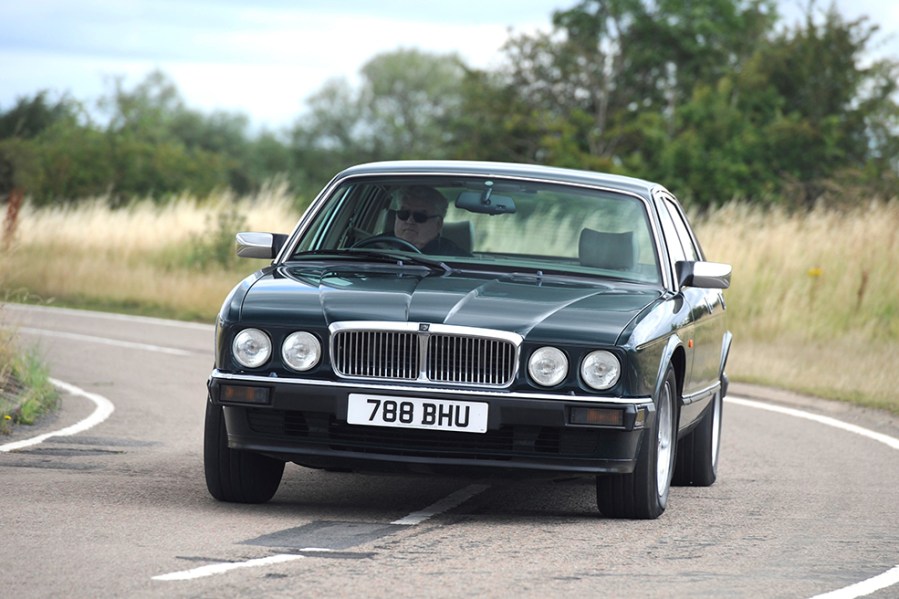
Jaguar XJ40: our verdict
Today, the mildly scruffy XJ40s all seem to have disappeared, leaving the market split between the few absolute disasters still clinging to an MoT and those cherished examples that have survived thanks to their owners’ enthusiasm for what is a superb cruiser offering all the traditional XJ values. Find one of these latter examples and you could be onto a winner.

